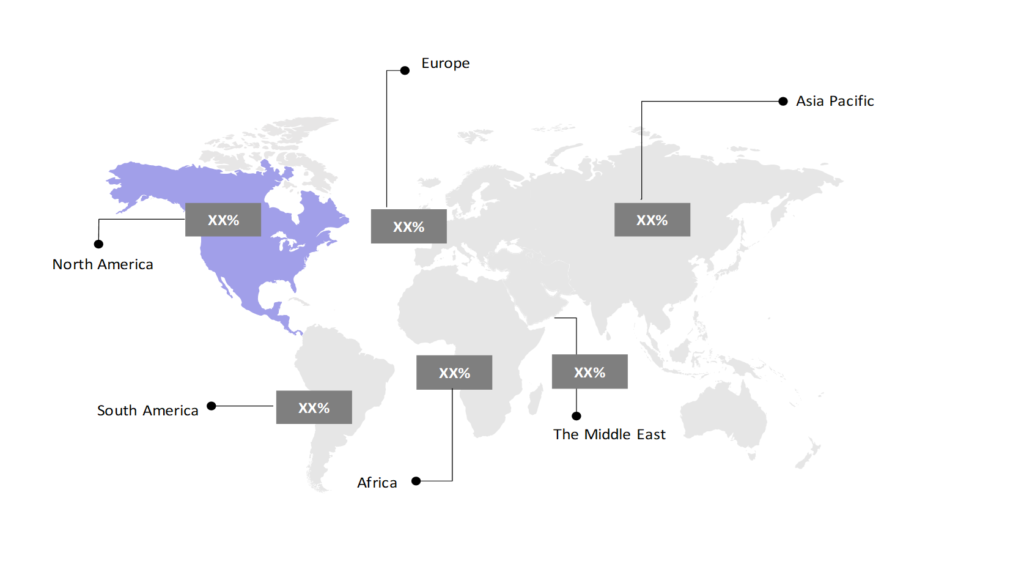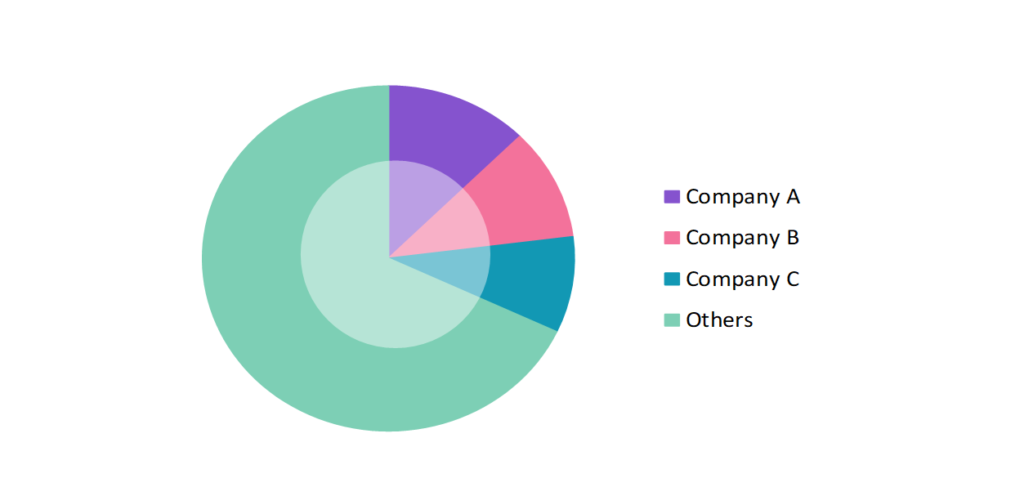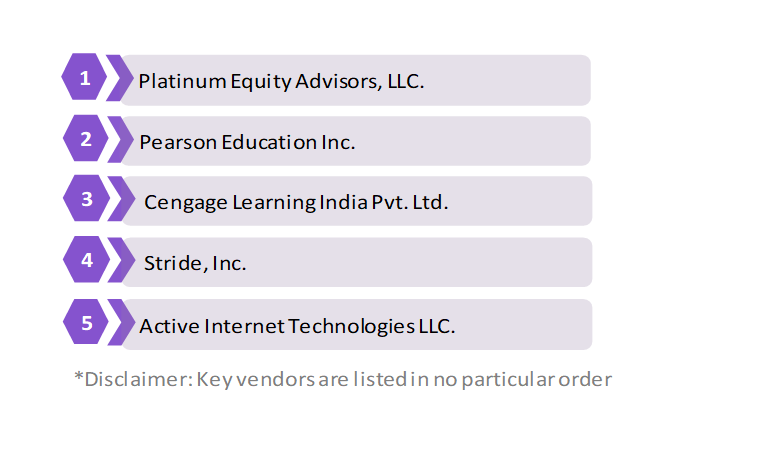K-12 Education Market Outlook: Size, Share, Trends & Growth Analysis (2024-2029)
The report covers a comprehensive analysis segmented by Type (Public K-12 Education, Private K-12 Education), By Application (Pre-primary School and Primary School, Middle School, High School), By Deployment (Cloud, On-premises), By Spend Analysis (Hardware, Software, Others), By Geography (North America, South America, Asia Pacific, Europe, the Middle East, Africa).
K-12 Education Market Snapshot

K-12 Education Market Overview
The global k-12 education market is estimated to be $64.47 Bn in 2024 and is anticipated to reach $111.97 Bn in 2029. The global K–12 education market is registering a compound annual growth (CAGR) of 11.67% during the forecast period 2024-2029.
The K–12 education market includes establishments that offer elementary and secondary education to pupils between the ages of five and eighteen. Diverse curriculum standards, delivery strategies, and educational approaches that are adapted to fit the needs of kids at different developmental stages define this market. The K–12 education sector has seen tremendous changes recently because of advancing technology, changing educational approaches, and shifting social expectations. Teaching and learning experiences have been transformed by the incorporation of digital technologies, which enable individualized instruction and remote education delivery. Examples of these technologies include interactive whiteboards, instructional software, and online learning platforms.
Furthermore, schools are emphasizing academic accomplishment, holistic development, and student performance measures as part of an increasingly outcomes-based education. The use of data analytics tools and assessment techniques to gauge student achievement, pinpoint areas in need of development, and guide instructional tactics has been accelerated by this trend. Hence, the value of social-emotional learning (SEL) and the development of 21st-century abilities including creativity, critical thinking, communication, and teamwork is becoming more widely acknowledged. Project-based learning initiatives and SEL programs are being implemented by schools to help kids develop their social skills, emotional intelligence, and resilience.
Government regulations, family preferences, and demographic changes all have an impact on the K–12 education market. These factors also drive competition among educational institutions and foster innovation in support services, extracurricular activities, and curriculum design. Nonetheless, issues including unequal resource access, financial limitations, and the requirement for teacher preparation and assistance continue to be major concerns in the K–12 education sector. To ensure that all students have fair access to high-quality education and are ready for success in a world that is becoming more complex and interconnected, stakeholders must work together to address these issues.
K-12 Education Market Coverage
| Historical & Forecast Period | 2018-2029 |
| Base Year | 2023 |
| Forecast Period | 2024-2029 |
| Units | Billion US$ |
| Segments | By Type, By Application, By Deployment, By Spend Analysis |
| Geographies | North America, South America, Asia Pacific, Europe, The Middle East, Africa |
| Key Vendors |
Platinum Equity Advisors, LLC., Pearson plc, Cengage Learning Holdings II, Inc., Stride, Inc., Active Internet Technologies LLC. |
Key Geographies of K-12 Education Market, 2023

Porter’s 5 Forces Analysis of K-12 Education Market

K-12 Education Market Trends
The K–12 education sector has seen several noteworthy trends in recent years that have affected the nature of teaching and learning. Schools have been incorporating technology into their curricula more quickly due to the expansion of remote learning and the growing availability of digital resources. To increase student engagement and enable individualized learning experiences, this involves implementing interactive technologies, online learning environments, and instructional software. AI applications are quickly growing and transforming teaching and learning in the K–12 education market. Personalized learning experiences, adaptive tutoring, and task automation are all made possible by AI-powered solutions.
Chatbots and virtual tutors provide students with instant assistance and feedback. For example, The Let’s Talk Assistant chatbot offers parents, teachers, and school districts a quick and effortless way to get answers to frequently asked issues 24*7 in either English or Spanish. This enables school districts to deliver always-on K–12 chat customer service and generate internal efficiencies. AI-driven analytics gives teachers the ability to evaluate student performance, customize their lessons, and pinpoint areas in which they need to improve. Furthermore, AI improves accessibility by supporting a range of learning capacities and styles. AI’s position in K–12 education is expected to expand as schools incorporate technology more into their curricula. This is because AI has the potential to improve student results and provide educators and students more control in the digital era. STEM (science, technology, engineering, and mathematics) education efforts are becoming increasingly important in K–12 schools due to the growing demand for STEM abilities.
To educate students for future labor demands involves integrating STEM-focused courses, creating specialized programs, and forming relationships with industry. To address the overall development of pupils, K–12 education places an increased emphasis on social-emotional learning (SEL). To promote emotional intelligence, interpersonal skills, and resilience, all of which are essential for both academic performance and general well-being schools are putting SEL programs and techniques into practice. The advancement of fairness and inclusion in education has gained impetus due to public awareness and advocacy. To address differences in access to opportunities, resources, and support services, schools are putting policies and procedures into place intending to foster more inclusive learning environments for all children.
K-12 Education Market Driving Factors
The K–12 education market is growing and changing due to several factors. Technology’s quick development has spurred innovation in teaching tools and approaches, leading educational institutions to embrace digital solutions that improve student learning and instruction. The use of AI-driven tutoring programs and adaptive learning platforms is being fueled by parents, educators, and legislators realizing the advantages of individualized learning strategies catered to each student’s needs. A solid educational foundation is required because of the growing internationalization of the workforce and the need for qualified workers in industries like STEM.
There is pressure on schools to provide students with the necessary skills and competencies to thrive in a labor market that is changing quickly. Increased emphasis on academic achievement and student outcomes resulted in data-driven methods for evaluation, intervention, and development. Investments in K–12 institutions are driven by government programs and laws aimed at raising educational standards and expanding access to education, which promotes innovation and growth in the industry. Competition among educational institutions is fueled by parents’ desire for high-quality education and more options for their children to attend, which forces schools to stand out from the competition and innovate to draw in students. These drivers shape the dynamic and ever–changing K–12 education market, which also impact how teaching and learning will develop in the future.
K-12 Education Market Challenges
Several obstacles affect the K–12 education market’s efficacy and expansion. It is difficult to integrate digital learning tools and resources fairly when students and schools have unequal access to technology and internet connectivity. The potential impact of educational initiatives is limited because many instructors lack the necessary training and support to successfully incorporate technology and innovative teaching approaches into their classrooms. Insufficient funding for education can make it more difficult for schools to invest in innovative facilities, supplies, and professional development opportunities, which can impede efforts to innovate and improve.
A concentration on test preparation that ignores critical thinking abilities and comprehensive student development might result from an emphasis on standardized testing. Teachers face a big difficulty when it comes to keeping students interested and involved in both traditional and digital learning environments, especially in the face of distractions and conflicting interests. It is still difficult to address the differences in educational results, resources, and access that arise from racial, socioeconomic, and other factors. Systematic initiatives are needed to address these disparities. To maintain relevance and efficacy in educating students for the future, curricula and teaching approaches must be continuously adjusted due to the changing demands of the workforce and societal shifts. To develop innovation, promote equity, and improve the quality of K–12 education, legislators, educators, parents, and communities must work together to address these concerns.
K-12 Education Market – Key Industry News
- In January 2024, Avathon Capital, a private equity firm exclusively investing in lower middle-market companies in the education and workforce markets, announced its acquisition of Magical Beginnings Learning Centers Magical Beginnings is a Massachusetts-based network of early childhood education centers operating in the Greater Boston Area.
- In January 2024, PowerSchool Group LLC, the leading provider of cloud-based software for K-12 education in North America, announced that it has acquired Allovue, Inc. a leading provider of K-12 financial planning, budgeting, and analytics software in the U.S.
- In March 2024, Accenture plc. has agreed to acquire Udacity, a digital education pioneer with deep expertise in the development and delivery of proprietary technology courses that blend the flexibility of online learning with the benefits of human instruction.
K-12 Education Market Competitive Landscape
The Global K-12 Education market is highly competitive, and it is marked by the presence of many prominent players competing for a larger market share. To stay competitive, both public and private universities integrate digital resources for tailored learning experiences and adapt to changing pedagogical needs. There are constant changes in this dynamic environment due to evolving curricular requirements, technological improvements, and a rising emphasis on individualized learning strategies.
The participants in the global k-12 education industry are always developing their strategies to preserve a competitive advantage. Companies primarily use acquisitions, R&D, partnerships, and technological launches. Several important entities in the k-12 education market include Platinum Equity Advisors, LLC., Pearson plc, Cengage Learning Holdings II, Inc., Stride, Inc., Active Internet Technologies LLC .and others.
K-12 Education Market Company Share Analysis, 2023 (%)

K-12 Education Market – Key Companies

Reason to Buy from us

Table of Contents
| 1. Introduction |
|---|
| 1.1. Research Methodology |
| 1.2. Scope of the Study |
| 2. Market Overview / Executive Summary |
| 2.1. Global K-12 Education Market (2018 – 2022) |
| 2.2. Global K-12 Education Market (2023 – 2029) |
| 3. Market Segmentation |
| 3.1. Global K-12 Education Market by Type |
| 3.1.1. Public K-12 Education |
| 3.1.2. Private K-12 Education |
| 3.2. Global K-12 Education Market by Application |
| 3.2.1. Pre-primary School and Primary School |
| 3.2.2. Middle School |
| 3.2.3. High School |
| 3.3. Global K-12 Education Market by Deployment |
| 3.3.1. Cloud |
| 3.3.2. On-premises |
| 3.4. Global K-12 Education Market by Spend Analysis |
| 3.4.1. Hardware |
| 3.4.2. Software |
| 3.4.3. Others |
| 4. Regional Segmentation |
| 4.1. North America |
| 4.1.1. The U.S |
| 4.1.2. Canada |
| 4.1.3. Mexico |
| 4.2. South America |
| 4.2.1. Brazil |
| 4.2.2. Argentina |
| 4.2.3. Colombia |
| 4.2.4. Chile |
| 4.2.5. Rest of South America |
| 4.3. Asia Pacific |
| 4.3.1. China |
| 4.3.2. India |
| 4.3.3. Japan |
| 4.3.4. South Korea |
| 4.3.5. Rest of Asia Pacific |
| 4.4. Europe |
| 4.4.1. UK |
| 4.4.2. Germany |
| 4.4.3. Italy |
| 4.4.4. France |
| 4.4.5. Spain |
| 4.4.6. Rest of Europe |
| 4.5. The Middle East |
| 4.5.1. Turkey |
| 4.5.2. UAE |
| 4.5.3. Saudi Arabia |
| 4.5.4. Rest of the Middle East |
| 4.6. Africa |
| 4.6.1. Egypt |
| 4.6.2. South Africa |
| 4.6.3. Rest of Africa |
| 5. Value Chain Analysis of the Global K-12 Education Market |
| 6. Porter Five Forces Analysis |
| 6.1. Threats of New Entrants |
| 6.2. Threats of Substitutes |
| 6.3. Bargaining Power of Buyers |
| 6.4. Bargaining Power of Suppliers |
| 6.5. Competition in the Industry |
| 7. Trends, Drivers and Challenges Analysis |
| 7.1. Market Trends |
| 7.1.1. Market Trend 1 |
| 7.1.2. Market Trend 2 |
| 7.1.3. Market Trend 3 |
| 7.1.4. Market Trend 4 |
| 7.1.5. Market Trend 5 |
| 7.2. Market Drivers |
| 7.2.1. Market Driver 1 |
| 7.2.2. Market Driver 2 |
| 7.2.3. Market Driver 3 |
| 7.2.4. Market Driver 4 |
| 7.2.5. Market Driver 5 |
| 7.3. Market Challenges |
| 7.3.1. Market Challenge 1 |
| 7.3.2. Market Challenge 2 |
| 7.3.3. Market Challenge 3 |
| 7.3.4. Market Challenge 4 |
| 7.3.5. Market Challenge 5 |
| 8. Regulatory Landscape |
| 9. Competitive Landscape |
| 9.1. Platinum Equity Advisors, LLC. |
| 9.2. Pearson plc |
| 9.3. Cengage Learning Holdings II, Inc. |
| 9.4. Stride, Inc. |
| 9.5. Active Internet Technologies LLC |
| 9.6. Company 6 |
| 9.7. Company 7 |
| 9.8. Company 8 |
| 9.9. Company 9 |
| 9.10. Company 10 |
K-12 Education Market – Frequently Asked Questions (FAQs)
What is the current size of the global k-12 education market?
The market size for the global k-12 education market in 2024 is $64.47 Bn.
Who are the major vendors in the global k-12 education market?
The major vendors in the global k-12 education market are Platinum Equity Advisors, LLC., Pearson plc, Cengage Learning Holdings II, Inc., Stride, Inc., and Active Internet Technologies LLC.
Which segments are covered under the global k-12 education market segments analysis?
This report offers in-depth insights into each by type, by application, by deployment, and by spend analysis.
